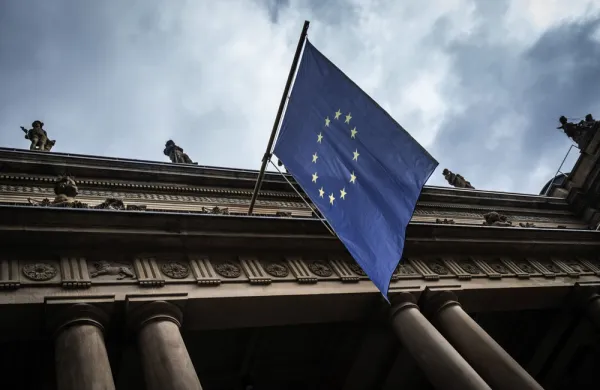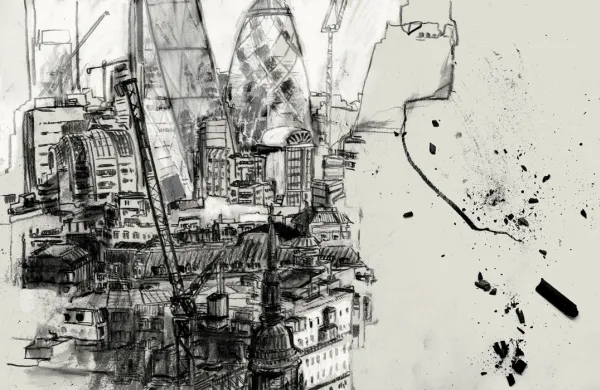When Banca Monte dei Paschi di Siena needed to raise capital last fall, executives paraded the beleaguered Tuscan bank in front of hundreds of global investors, hoping to find an anchor investor willing to drop a cool €1 billion ($1.07 billion).
Not one took the bait.
Who could blame them? Monte Paschi could be likened to rotten cannoli — but rather than spoiled ricotta filling, it’s chock-full of bad loans.
Without an anchor investor, Monte Paschi has been forced to turn to the Italian government for a bailout in what could be the beginning of the country’s biggest bank intervention since fascist dictator Benito Mussolini nationalized the sector in 1933. While European banks in general have struggled to stay afloat in a world of tougher regulations and low-to-negative interest rates, the Italian banking system is stuffed with €360 billion of bad loans. To make matters worse, the Bank of Italy estimates more than half are nonperforming, or sofferenze. For comparison, total equity in the Italian banking sector is about €225 billion.
Since its founding in 1472, Monte Paschi has survived countless wars and crises, but according to stress tests published by the European Central Bank in July, the world’s oldest bank would not survive into 2018 under its worst-case scenario. It did not come as a surprise: The bank has fallen on tough times since the start of the global financial meltdown. In November 2007, on the eve of the crisis, Monte Paschi made an ill-timed — and perhaps overpriced — acquisition of rival Banca Antonveneta from Spain’s Banco Santander for €9 billion in cash. As the crisis raged on, Monte Paschi allegedly covered up losses using a series of derivatives trades with Deutsche Bank and Nomura Holdings that came to light in 2013, bringing criminal charges and tarnished reputations to all three. Monte Paschi took a plea deal in October, while the trial against Deutsche Bank and Nomura kicked off in Milan in December.
In September the bank’s share price was already down 80 percent for the year when Marco Morelli stepped in as CEO to lead a turnaround. The former head of Italy for Bank of America Merrill Lynch took on the Herculean task of pitching Monte Paschi to investors in a last-ditch effort to raise €5 billion and avoid government intervention. That’s when Morelli kicked the tires on that fateful autumn road show that made stops in London, New York City, and Doha. Ultimately, it went nowhere.
Investors saw a glimmer of hope when news broke that the Qatar Investment Authority had entered talks to become the necessary anchor investor. The $338 billion sovereign wealth fund was a natural choice after investing billions to shore up Barclays and Credit Suisse in 2008. But in the end, Monte Paschi failed to woo the Qataris — or any other investors, for that matter. And as if it wasn’t a hard enough sell already, confidence in Italy’s political stability eroded on December 4 when voters shot down a constitutional referendum Prime Minister Matteo Renzi had staked his career on.
Luckily for Monte Paschi, two weeks later the incoming administration of Paolo Gentiloni won support from parliament to establish a €20 billion rescue fund to serve as a backstop for its struggling banking sector. On December 23, Monte Paschi’s stock price was down 88 percent for the year when the bank asked for government assistance. Italian market regulator Consob subsequently suspended trading in Monte Paschi’s shares and bonds while the terms of the bailout are finalized.
Under the EU’s so-called “bail-in” rules, junior bondholders must take a hit before a member state can bail out a bank with taxpayer money. The ECB has ordered Monte Paschi to add €8.8 billion to its capital base to pass the stress test it failed in July. Navigating the new requirements, the Bank of Italy announced plans for a “precautionary recapitalization” that calls for the federal government to cough up €6.6 billion, including €2 billion to compensate some 40,000 retail bondholders. The remaining €2.2 billion Monte Paschi needs would come from swapping junior debt for equity.
Monte Paschi needs to submit a new restructuring plan by the end of February before Rome and Brussels can start negotiations over how the state will provide capital and split the burden among shareholders. Speaking before a Senate committee in January, CEO Morelli said he plans to cut 500 branches and 2,450 jobs within the next three years. “The new MPS business plan is based on the state’s intervention being temporary,” he told parliament. “The bank must return to being a bank. Our objective is to return to a strong commercial position as soon as possible.”
If one thing is certain in all this, it’s that the Italian banking crisis is far from over. Analysts warn that Italy’s banking sector may need as much as €52 billion in state aid, and Brussels tightening its grip on the Italian economy would hardly sit well with voters: Support is already growing to exit the EU. Italeave or Quitaly, anyone?






